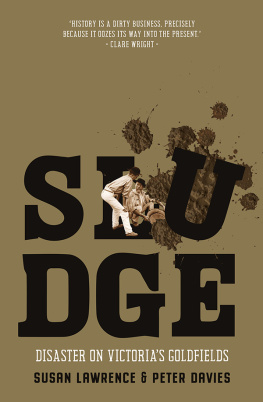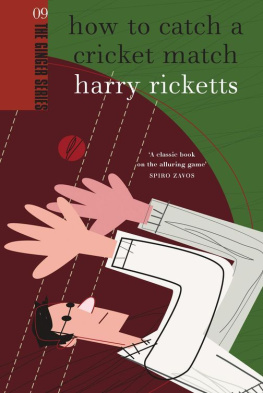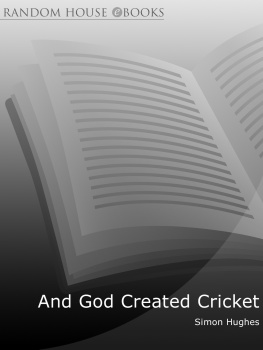Cricket and community in England
Cricket and community in England
1800 to the present day
Peter Davies
with Robert Light
Manchester University Press
Manchester and New York
distributed exclusively in the USA by Palgrave
Copyright Peter Davies and Robert Light 2012
The right of Peter Davies and Robert Light to be identified as the authors of this work has been asserted by them in accordance with the Copyright, Designs and Patents Act 1988.
Published by Manchester University Press
Oxford Road, Manchester M13 9NR, UK
and Room 400, 175 Fifth Avenue, New York, NY 10010, USA
www.manchesteruniversitypress.co.uk
Distributed exclusively in the USA by
Palgrave, 175 Fifth Avenue, New York,
NY 10010, USA
Distributed exclusively in Canada by
UBC Press, University of British Columbia, 2029 West Mall,
Vancouver, BC, Canada V6T 1Z2
British Library Cataloguing-in-Publication Data
A catalogue record for this book is available from the British Library
Library of Congress Cataloging-in-Publication Data applied for
ISBN 978 0 7190 8279 5 hardback
15 14 13 12 11 10 09 08 07 06 10 9 8 7 6 5 4 3 2 1
The publisher has no responsibility for the persistence or accuracy of URLs for any external or third-party internet websites referred to in this book, and does not guarantee that any content on such websites is, or will remain, accurate or appropriate.
Typeset by Helen Skelton, Brighton, UK
This book is dedicated to all those people who have devoted their lives to local cricket and local cricket clubs.
Contents
We would like to thank Brian Heywood for reading, and offering his thoughts, on the manuscript. Thanks you also to the University of Huddersfield Library its Yorkshire Cricket Collection was an invaluable resource and to all the postgraduate students at the University of Huddersfield Cricket Research Centre.
We are hoping that this book will fill a gap in the market. The literature on cricket, and in particular cricket history, is vast, but there are few broad-ranging histories of the sport. Obviously, cricket has some very fine academic historians but it could be argued that it is slightly lacking in all-embracing social histories. This volume is a social history of grassroots cricket in England. It will touch on county and Test cricket, just like it will refer in passing to cricket in Wales, Scotland and Ireland, but its focus will remain cricket in England.1
It would be fair to say that sport history has been taken more seriously in recent decades. Richard Holt set the pace with his book, Sport and the British: A Modern History (1990). It traces the development of sport since 1800 and is particularly interested in the contribution of the Victorians to the growth of sport. That said, Holt can still say, A remarkable range of popular games and contests was played and enjoyed in Britain before the advent of modern sports. Each town or village had its ball games, running races, and varieties of fighting and animal sports.2 After chapters on early sport and amateurism, Holt goes on to consider sport in an urban context and sport and empire. His final chapter brings the story of sport up to date, looking at issues such as television and hooliganism.
Similar issues interested Jeff Hill in his book, Sport, Leisure and Culture in Twentieth-Century Britain (2002). His main concern is recreation and free time. He says, Over the past couple of decades in Britain there has been an immense outpouring of work on sport alone, so much so that there is now a strong case for regarding the study of sport as a distinct sub-branch of the discipline of history.3 Hill is interested in many key themes including economics, the media, cinema and tourism. His chapter on clubs is also interesting. He notes a particular British tendency towards voluntary organisation.4
Martin Polley has written about the Olympics and also the history of sport in Moving the Goalposts: A History of Sport and Society in Britain Since 1945 (1998), The History of Sport in Britain, 18801914 (ed. 2003) and Sports History: A Practical Guide (2006). With regard to the Olympics, he argues, Its misguided to think that the Olympic Games went from their classical Greek dissolution straight to de Coubertins revival without anything in between, and a lot of those in between events took place in Britain. A couple of important ones are still going on: Robert Dovers Olympick Games at Chipping Campden in the Cotswolds; and the Much Wenlock Olympian Games in Shropshire. Ive been to both this year: nothing beats visiting a living event with deep historical roots to get a sense of the events history and identity.5
We should note the work by H.A. Harris, Sport in Britain: Its Origins and Development (1975). This book looks at the nature of early sport looking at Roman Britain, for example and then goes on to assess the evolution of a variety of sports including cricket. Harris is particularly interested in the amateur/professional divide and focuses on the landmark year of 1963, when the distinction was abolished.6 He also assesses the significance of the two world wars for cricket. He says that in 1919 every effort was made to put sport back on its feet; in 1945, after six years of war, he argues that very little had changed. His social history also considers the nature of womens cricket and the way in which the sport originated in girls boarding schools as an alternative to tennis.7
J.A. Mangans edited collection, Pleasure, Profit and Proselytism (1988), focuses on sport as a cultural phenomenon. He emphasises the fact that over time leisure and sport became more important. Mangans book comprises fourteen chapters, with contributors focusing on such themes as industrialisation, social stratification, popular culture, imperialism, Social Darwinism and colonialism.8 Mangan argues that people made their own culture and that sport, in a sense, was a replacement for religion. More controversially, he asserts that through sport the bourgeoisie was able to take up class positions against the masses.9
In Sport in Britain: A Social History (1989), Tony Mason talks about the importance of sport to the study of social history. He says: Its place in the popular culture has been recognised by sportsmen and non-sportsmen, men and women, radicals and conservatives, intellectuals and hearties.10 He goes on to devote chapters to all the main sports, with Jack Williams writing the section on cricket. He looks at the role of the MCC, issues of finance, levels of participation, the nature of recreational cricket, the nature of league cricket and womens involvement. His contention is that, Throughout the twentieth century cricket has been inseparably intertwined with the class system and its history does much to make clear the changing nuances of social relationships within Britain.11
Derek Birley also takes a long-term perspective in Sport and the Making of Modern Britain (1993). His first chapters on the very early history of sport are subtitled AD431199, 12001485 and 14851603, and he finishes his historical survey in 1888. Like other authors, he seeks to justify the study of sport. He quotes Joseph Strutt: In order to form a just estimate of the character of any particular people it is absolutely necessary to investigate the sports and pastimes most prevalent amongst them.12 He goes on to argue: As for sport it is not only older than the British Isles but older than man.13














